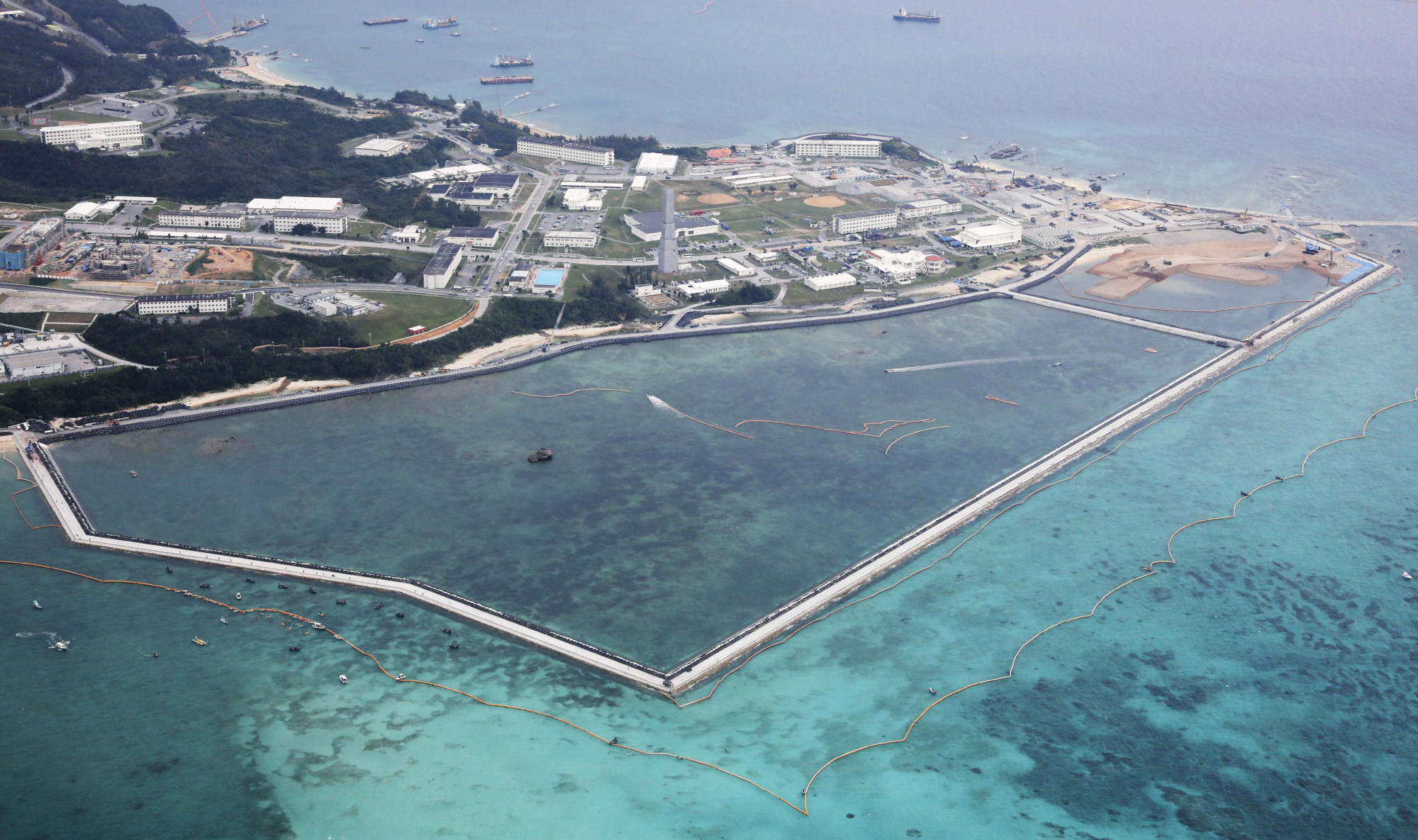Like many construction projects supported by the public sector, the new U.S. Marine Corps air base being built in the Henoko district of Nago, Okinawa Prefecture, has seen its budget skyrocket since it was first proposed and its completion date postponed. When the project was first announced jointly by the U.S. military and Japan in 1996, the construction period was going to be five years for landfill work and three years for building the airfield. Henoko is meant to replace U.S. Marine Corps Air Station Futenma, which is considered a danger to residents of Ginowan City and, according to a previous plan, Futenma would be "returned" to Okinawa by 2022 at the earliest. On Dec. 25, the Defense Ministry announced that the land would not be returned until the mid- to late 2030s.
The reason for the latest delay is that the seabed of Oura Bay, where the Henoko construction is underway, is too soft to support an airfield and, therefore, will require more reinforcement than originally planned. The design for the work has been altered, which means a new construction plan has to be approved by a local government that is against the project in the first place. This opposition, demonstrated by a majority of residents voting to reject the project, has not swayed the central government from proceeding under the usual strategy, which is that once a project has begun, it is impossible to stop, regardless of the size and extent of any popular or legal resistance. When he was in Okinawa on Dec. 22, Chief Cabinet Secretary Yoshihide Suga told reporters he would not comment on the reapplication because it was still being studied, while Okinawa Gov. Denny Tamaki has indicated he will reject the new plan, but nobody sincerely believes the project will be canceled.
The media focus has been on the conflict between the ruling Liberal Democratic Party and the Okinawan prefectural government. Less attention is paid to the impracticality of the new base. According to the Okinawa Times on Dec. 14, 2018, landfill work began on Dec. 3, 2018, and, in the subsequent year, only 1.1 percent of the soil needed for the landfill had been transferred, so unless work is accelerated appreciably, that means landfill work alone could take almost 100 years. This supposition was mentioned during a discussion on Henoko on the web news program Democracy Times, whose participants also pointed out that after the Okinawan government rejects the new plan, there could be more lawsuits, thus adding another layer of delay to the project. Realistically speaking, Henoko may never be completed, and yet the central government shows no signs it will even consider changing its mind.



